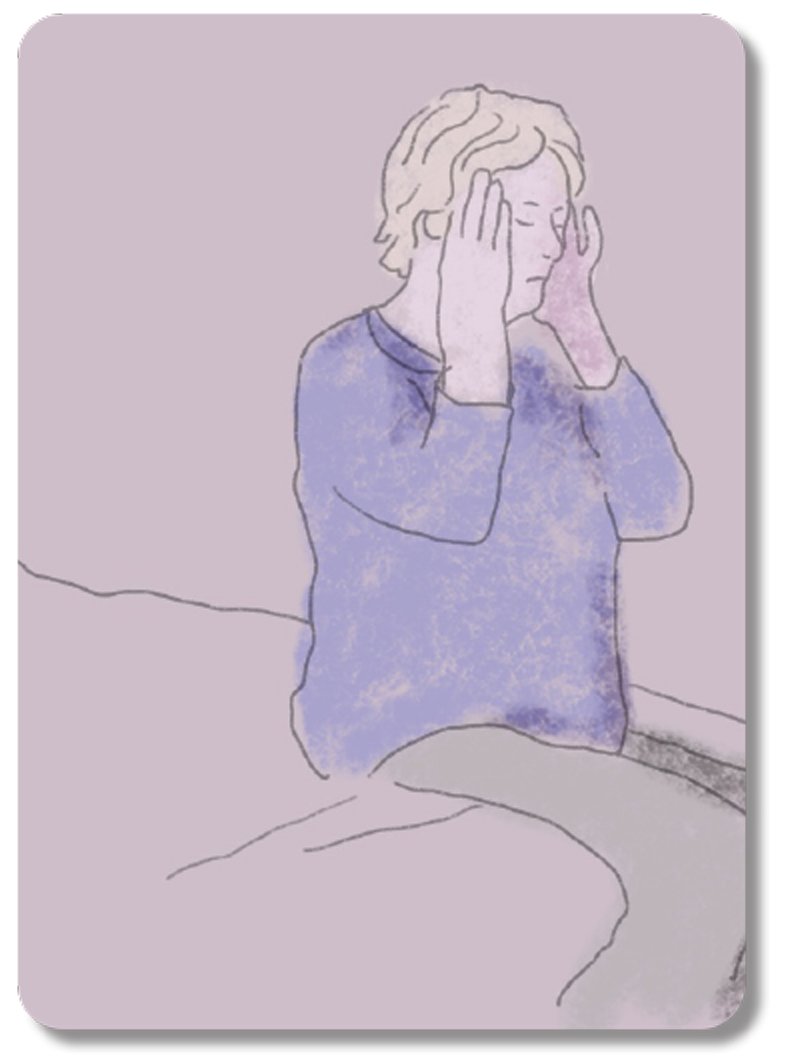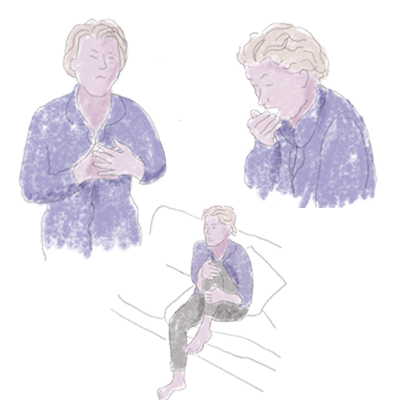A complete work-up that includes a high-sensitivity KIT D816V assay, serum tryptase test and bone marrow biopsy is required for definitive diagnosis:
Tryptase is a serine protease produced and stored in mast cells6
Serum tryptase levels are often elevated in SM patients but normal in most CM patients. They may rapidly increase above baseline in anaphylactic reactions, which makes it a diagnostic parameter of mast cell activation6
Recommendations for next steps based on serum tryptase level
<11.5
ng/mL
Mastocytosis unlikely — but cannot be ruled out5
11.5–20
ng/mL
Systemic mastocytosis possible—screen for KIT D816V in peripheral blood with high-sensitivity assay5
≥20
ng/mL
Conduct a bone marrow biopsy and screen for KIT D816V mutation (WHO minor criterion)4,5
It is recommended by ECNM-AIM to screen for KIT D816V in patients with suspected SM as a first step1
A highly sensitive PCR-based method (e.g. ASO-qPCR or ddPCR with <1% sensitivity via VAF) is recommended for screening for the presence of KIT D816V in peripheral blood; standard NGS assays have low sensitivity and are not sufficient to detect2
Patients who test positive for KIT D816V using high-sensitivity KIT testing have an increased likelihood of SM. Further workup involves assessing if the patient meets WHO criteria for SM diagnosis (see below for full WHO criteria)2–4
If KIT D816V test is negative and/or basal serum tryptase is <11.5 ng/mL in patients with high clinical suspicion of SM, bone marrow biopsy is critical to rule out SM1,2,5
Bone marrow is the most common site of extracutaneous accumulation of mast cells in patients with SM5
Bone marrow evaluation should detect multifocal dense infiltrates of mast cells (≥15 mast cells in aggregates) as a marker in SM. Aberrant mast cells in bone marrow express CD25, with or without CD2, in addition to normal mast cell markers apparent in SM (WHO Major and Minor Criteria)4
ECNM-AIM recommends that patients with MCAS should have a bone marrow examination when they exhibit clear signs of SM such as: (i) typical skin lesions, (ii) a KIT-activating mutation, (iii) unexpectedly high / steadily increasing tryptase levels, (iv) splenomegaly, (v) unexplained osteoporosis, (vi) spontaneous anaphylaxis, (vii) REMA score ≥2, (viii) blood cell count abnormalities1
Diagnosis of CM and SM both require a bone marrow assessment; when CM is already diagnosed in adults, patients should undergo a complete staging including a bone marrow investigation to confirm or exclude SM, as recommended in the EHA guidelines1,4
ECNM-AIM=European Competence Network on Mastocytosis-American Initiative in Mast Cell Diseases; EHA=European Haematology Association; REMA= Red Española de Mastocitosis (Spanish Mastocytosis Network)


World Health Organization (WHO) diagnostic criteria for SM
Diagnosis of SM requires the presence of 1 major criterion and at least 1 minor criterion, or at least 3 minor criteria4
Major criterion
Multifocal dense infiltrates of mast cells (≥15 mast cells in aggregates) detected in sections of the bone marrow and/or other extracutaneous organ(s)
MINOR criterion
>25% of all mast cells are atypical cells (type I or type II) on bone marrow smears or are spindle-shaped in dense and diffuse mast cell infiltrates in BM or other extracutaneous organ(s)
Activating KIT point mutation(s) at codon 816 or in other critical regions of KIT in the bone marrow or other extracutaneous organ(s)
Mast cells in bone marrow, blood or other extracutaneous organ(s) aberrantly express one or more of the following antigens: CD2, CD25, CD30
Baseline serum tryptase concentration >20 ng/mL in the absence of a myeloid AHN. In the case of a known HαT, the tryptase level should be adjusted
Did you know?
Hereditary alpha-tryptasemia (HαT), a common genetic trait with increased copy numbers of TPSAB1 (alpha-tryptase encoding gene), is associated with elevated basal serum tryptase and mediator-related symptoms. Mastocytosis patients with HαT were found to exhibit higher tryptase levels than patients without HαT7

